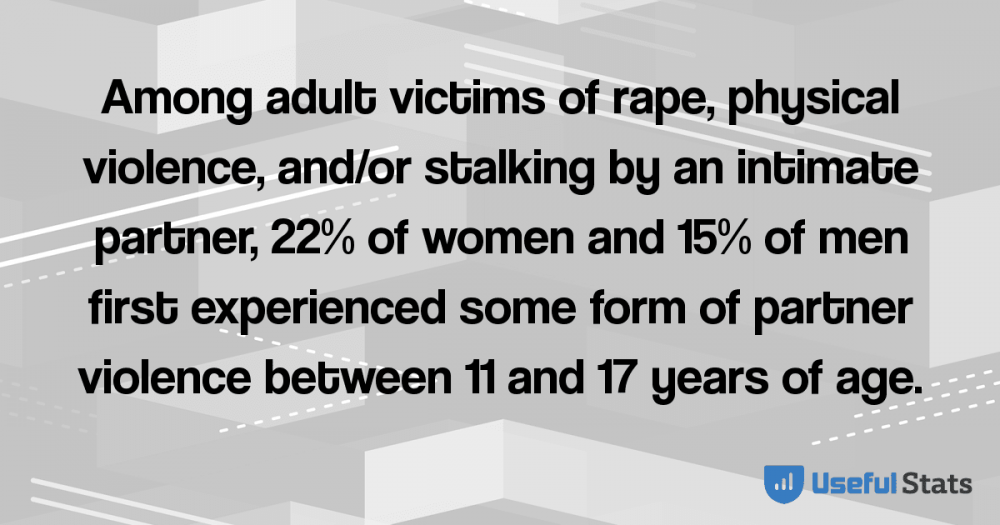The crime against Kelly McGillis raises new questions about women’s safety.
The screaming is chilling.
Fear rings through her voice. “Please help meeeee!!!!”
The tape of the 911 call made by Kelly McGillis as she was being assaulted in her own home was released on June 25. The actress is famous for her starring roles in the award-winning films Top Gun with Tom Cruise, Witness with Harrison Ford and The Accused with Jodie Foster.
On the night of the attack, McGillis entered her North Carolina home in idyllic Henderson County outside Asheville to find her dogs missing. Suddenly a woman ran at her, punching and clawing at her. McGillis tried to escape, screaming for help. She said she managed to get outside and dial 911, but the woman came after her.
“She ran out after me and began punching and scratching me trying to grab the phone out of my hand,” McGillis told the local ABC news affiliate. “I began screaming as loud as I could hoping someone somewhere might hear me.”
Laurence Marie Dorn, 38, has been charged with second-degree burglary, misdemeanor larceny, misdemeanor stalking, assault and battery, and interfering with emergency communication. She is being held on $60,000 bond.
Dorn had driven from her home in Clifton, Illinois to McGillis’s NC home. How she uncovered the reclusive actress’s address is not currently known.
On June 28, McGillis told ABC’s Nightline the attack was particularly terrifying because when McGillis was studying acting in New York, she was brutally raped at knifepoint by two men who broke into her apartment. She was only 24.
Police apprehended both men. One was convicted, the other was not. McGillis told People magazine that the attack damaged her deeply and made it hard for her to function. She developed an alcohol problem which she entered rehab to quit. But the trauma of that violent assault never left her.
Like many victims of violent crime, McGillis told Nightline’s Gio Benitez that the alleged attack by Dorn pushed her over the edge and made her question what she had done to be victimized.

It’s gut-wrenching watching the 58-year-old McGillis fighting back tears as she talks to Benitez in the soft voice that helped make her famous. She looks vulnerable and frightened, her hands clasped tightly, scratch marks clearly visible on her hands and neck and shoulder.
McGillis said she was additionally horrified by the fact that Dorn brought her six-year-old-daughter with her. The child is currently with protective services in NC awaiting the arrival of an Illinois relative.
McGillis was long rumored to be a lesbian during the height of her Hollywood stardom and her name was repeatedly linked with late singer Whitney Houston, whose former husband Bobby Brown, revealed Houston’s bisexuality in his recent memoir, Every Little Step.
Rumors of a love triangle between McGillis, Houston and Foster flared during the filming of The Accused, but none of the women would address the rumors.
McGillis came out as a lesbian in 2009, revealing she’d been in a relationship with another woman for a decade. Foster came out in 2013 at the Golden Globe Awards. McGillis’s civil union with her longtime partner, Melanie Leis ended in 2011. Foster has been married to Alexandra Hedison since 2014.
McGillis is not the only actress to have been a victim of stalking or home invasions. In July 2014, a man broke into Oscar-winner Sandra Bullock’s home and terrorized her.
Joshua Corbett was tried and convicted in August 2015. Madonna was stalked by Robert Dewey Hoskins who was convicted in 2012. Catherine Zeta-Jones was stalked by Dawnette Jones (no relation). Dawnette Jones was also convicted.
But it’s not just celebrities. One in six women is a victim of stalking, most often by a former intimate partner, but also by people who believe they have a relationship with the victim, as Dorn apparently believed she had with McGillis, who had never met her.
Lisa Trubnikova, 31 and Anna Trubnikova, 30 were a recently married lesbian couple when stalking led to them being stalked, shot and Lisa being killed.
They were so happy. You can see it in photographs of the couple. Their families said the women did everything together, including their work.
They were both Petty officers in the U.S. Coast Guard. Nothing could tear them apart. Nothing except Adrian Loya, a fellow guardsman, who had, according to Lisa’s family, “fixated” on her when the three were stationed together in Alaska.
Loya planned out Lisa’s murder, according to Massachusetts law enforcement. On February 5, 2015, armed with two rifles, a 9mm handgun and a shotgun, police said Loya set a car on fire outside the Trubnikova’s Cape Cod home to keep officers at bay, and also set fake bombs around the perimeter of the property. He also shot at police who responded to a home invasion call, wounding one officer.
Loya’s plan was to murder Lisa Trubinokova on his 31st birthday. If he could not have her, if she was going to choose another woman over him, he would have to kill her. If he could kill the wife as well, all the better.
According to court documents from March 2015, Loya allegedly wrote a 250-page essay about why Lisa deserved to die. He traveled to Massachusetts from his home in Chesapeake, Virginia.
He stalked Trubnikova and her wife, videotaping them with a camera affixed to a tree outside their home. And when he was ready, he burst into that home, heavily armed and wearing a mask, all the while videotaping his actions so he could have a recording of what Lisa looked like when she died, court documents assert.
Loya watched the two women on his laptop for hours, then at 2 a.m. shot his way into the house. He stormed into the couple’s bedroom, where the two women were in bed, according to the documents.
Loya ordered them to get up, according to the police report, and allegedly started shooting at Lisa Trubnikova, hitting her several times in the legs and torso and killing her. Anna Trubnikova was also seriously injured. She did attempt a call to 911.
Loya’s alleged actions meet all three theories for first degree murder: premeditation, extreme atrocity or cruelty, and felony murder. In March 2016, Loya was found competent to stand trial. Loya is charged with fatally shooting Lisa Trubnikova and wounding her spouse, Anna, in February 2015. He is also charged with wounding police Officer Jared MacDonald.
Loya has been at a state psychiatric facility since his arraignment in 2015. Loya’s attorney intends to plead Loya is not criminally responsible because of mental illness.
More stalking cases end like those of McGillis, Bullock and Madonna – with the person being stalked relatively unharmed – than like that of Lisa Trubnikova. But stalking can start inside a relationship and escalate. Loya started out as a friend and colleague of both women.
.gif)
The sheer volume of stalking cases and how little effort is engaged by law enforcement or the courts when someone is being stalked who is not a celebrity is concerning. One in six women will be a victim of stalking at some point in her life. That’s an extraordinarily high number.
My own experience as a victim of stalking by a stranger is, according to police, increasingly common – especially when it involves social media.
In the 1980s and ’90s I was frequently on local and national TV talk shows as a lesbian activist and one of the only openly lesbian journalists in the country. When the phone calls started in the late ’80s, it was alarming, but when the woman who was stalking me started describing what I was wearing and when I was leaving and returning to my house, I called police.
I was told there was nothing I could do except log and report the phone calls so the police could have a record. I was told to tape any calls with the stalker. Except I didn’t want to answer my phone and was anxious every time I left my house, since my stalker was alternately friendly and threatening.
She believed we were in some kind of relationship because she had seen me on TV and heard me on the radio (I had a radio program for ten years). She would quote passages from articles I had written. But most disturbingly, she didn’t think my then partner was right for me and would talk about “getting rid of her.”
The stalking went on for over a year. I filed numerous police reports and then one day the calls just ceased. Had she been arrested? I didn’t know what had happened, but I was grateful.
Two summers ago I began being stalked by someone who had developed a fixation on me through social media. This person was constantly writing posts about me, even though I had them blocked. Friends would warn me, as the posts got more and more threatening.
Then my front garden and car were vandalized and the person who was stalking me made comments about it on social media. I called police, reported the crime, gave them the name and workplace of the person. They suggested I get a restraining order.
Except I had never been involved with this person and the courts are woefully behind on the issues of Internet stalking. I contacted the Women’s Law Project and after hours of pouring over Twitter and Facebook posts and comparing them with the vandalism at my house, the attorney told me I wouldn’t have enough for a TRO (temporary restraining order) until there was an act of physical violence or an attempt at physical violence.
The statute in my state stipulates that “The stalker must have the intent to kill, injure, harass, intimidate or cause substantial emotional distress, or to place a victim or a victim’s family member, spouse or intimate partner in fear of death or serious bodily injury.”
All those things were true in my case, but social media was the problem. Was I actually being stalked and/or threatened, or was this just a “free speech” issue?
I was terrified. This person had threatened to disfigure me, attack my family, “destroy” me. Would I leave my house one day only to have my car explode or would my house be set on fire in the middle of the night?
I was so stressed out during the months this was most intense that I had a mild heart attack and was diagnosed with “broken heart syndrome” – something women are prone to from extreme stress.
I never was able to get a restraining order, but my attorney notified my stalker’s workplace that I was being stalked from their computers during work hours and demanded a “cease and desist.”
As McGillis noted, the terror never goes away. Dorn allegedly believed McGillis was interacting with her via Twitter and Facebook (McGillis has since deleted her social media accounts, to be safe). But those of us with even minor profiles online interact with dozens of people every day – how do we know who is whom?
There are key components to stalking that every woman (and man) should be aware of, particularly when the stalker is someone we know or have known or have been involved with.

Foremost is the fact the attentions of this person are unwanted. If this is your ex and they are still trying to force interaction with you when you no longer want it, that’s stalking.
It can take the form of phone calls, texts, emails, social media. It can be “accidental” run-ins with the ex in public places or where you work or go to school or the supermarket. It can be notes left on your car or in your mailbox.
It’s not romantic, it’s not passionate, it’s creepy. Police told me that any “intentional course of conduct that causes fear, concern for safety or other emotional distress” is indeed stalking.
Taking legal action is not easy, though it is somewhat easier with an ex-partner than with a stranger. Log the interactions: save copies of every text and email. Write down the date and time of the phone calls and the date, time and place of those “accidental” run-ins.
Tell others you are being stalked and if you know by whom, who is doing it. The more people who know, the more protected you can be.
Stalking laws vary from state-to-state, but most states and municipalities have some kind of ordinance. Find out what yours is and follow the directions about how to deal with the stalker legally.
The National Center for Victims of Crime (NCVC) has detailed information on stalking statutes nationwide. The NCVC asserts, “virtually any unwanted contact between two people that directly or indirectly communicates a threat or places the victim in fear can be considered stalking,” although as I and many others have discovered, the legal standard may be more strict.
Stalkers can be any gender, but women are far more likely to be stalked by men who represent nearly three quarters of stalkers of women victims. (Male victims are stalked equally by both men and women.) Women also comprise 75 percent of stalking victims.
Slightly over 40 percent of women report being stalked but as the police told me, always report. One of the officers who came to our house to assess the damage from the vandalism said if someone was watching my house, it would be good for them to see the police there.
The mistake many women make, according to victim advocacy groups, is in dismissing stalking as not that big a deal. It is a big deal. Lisa Trubnikova never thought Adrian Loya would follow her and Anna to Cape Cod.
Familiarizing ourselves with the signs of stalking is the best way to protect ourselves. It’s also a good way to make sure you aren’t engaging in stalking behavior yourself.
.jpg)
Stalking steals the privacy of another person – and their sense of safety. Partners who go through your phone or email or turn up all the time on your social media page are not being extra loving, they are intruding on your privacy. Many victims of stalking acknowledge the former partner stalking them was always crossing these boundaries within the relationship.
Here are some things stalkers do:
-
- Follow you and show up wherever you are.
-
- Send unwanted gifts, letters, cards, or e-mails.
-
- Damage your home, car, or other property.
-
- Monitor your phone calls or computer use.
-
- Use technology, like hidden cameras or global positioning systems (GPS), to track where you go.
-
- Drive by or hang out at your home, school, or work.
-
- Threaten to hurt you, your family, friends, or pets.
-
- Find out about you by using public records or online search services, hiring investigators, going through your garbage, or contacting friends, family, neighbors, or co-workers.
-
- Posting information or spreading rumors about you on the Internet, in a public place, or by word of mouth.
- Other actions that control, track, or frighten you.
Spreading rumors online is a new and increasingly common form of stalking and it can be damaging for a lifetime, as many women, myself included, have discovered. It’s important to remember that stalking is not your fault.
When McGillis was being interviewed by Nightline, she was asking herself what she had done to bring this on – it was heartbreaking to witness. How could she possibly know what would cause this?
Eight million people are stalked every year in the U.S. Over 85 percent of stalking victims are stalked by someone they know: 61 percent of female victims of stalking are stalked by a current or former intimate partner and 25 percent of female victims of stalking are stalked by an acquaintance.
About 1 in 5 of stalking victims are stalked by a stranger. More than ten percent of stalking victims have been stalked for 5 years or more. And stalking is relentless: 46 percent of stalking victims experience at least one unwanted contact per week.
There was nothing McGillis could do to protect herself from the alleged attack of Laurence Marie Dorn. But many stalkers are people we know. Knowing the signs is the first step to protecting yourself from the terror that can come from stalking.
